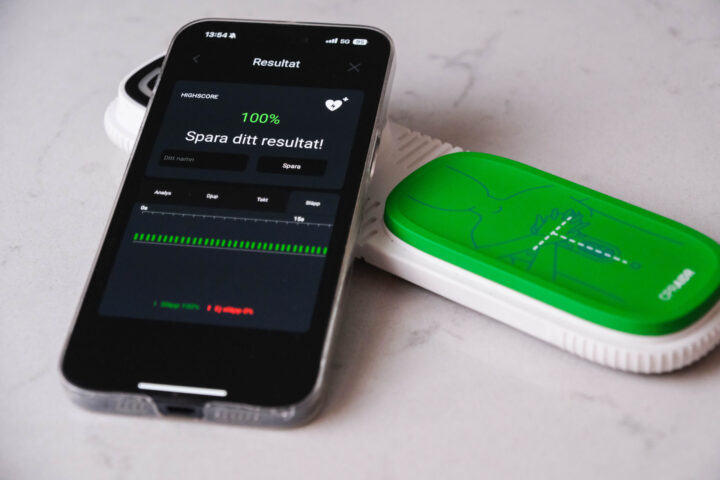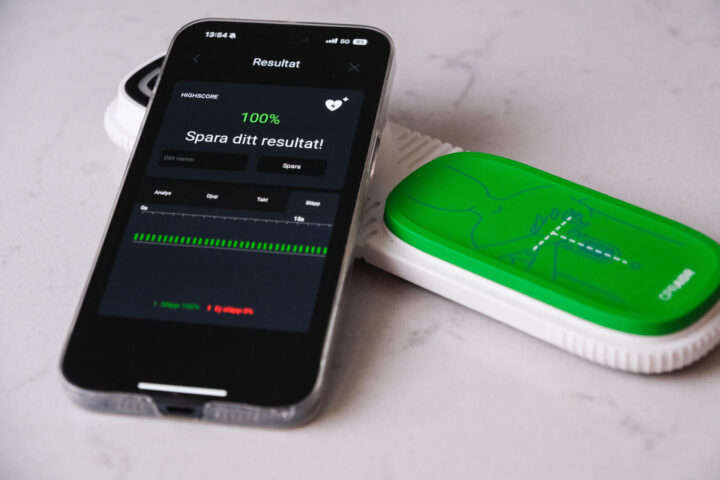From a study on the effect of CPR guide, sensor-based cardiopulmonary resuscitation training
by Matilda Eriksson and Jasaman Shams
Every year, 10,000 people in Sweden suffer a sudden cardiac arrest, with a survival chance outside the hospital of only 10%. In the event of sudden cardiac arrest, early CPR has been shown to double the chances of survival, making it a lifesaving treatment. Cardiopulmonary resuscitation, in turn, must be performed correctly, and therefore there are guidelines for how the treatment should be administered. These guidelines are continually updated to ensure that the treatment is as effective as possible, which has been shown to lead to less knowledge and poorer performance when CPR training is not conducted continuously and correctly. Previous studies have therefore demonstrated difficulties in performing the treatment, where for example the majority of people struggle to achieve the correct depth. This study aims to address this issue by investigating, together with Vital Signs and their product CPR guide, whether technical aids that provide real-time feedback can improve the performance of compressions during cardiopulmonary resuscitation. Thus, the purpose of the study is to examine whether the use of the Vital Signs CPR guide in conjunction with the execution of cardiopulmonary resuscitation improves treatment performance among individuals without a medical background. Furthermore, the study's question is formulated as follows:
How does the performance of cardiopulmonary resuscitation by bystanders with technical support differ compared to the performance without technical support based on the latest guidelines from the European Resuscitation Council?
The study was conducted on 25 individuals who were asked to perform compressions on a manikin that recorded the depth and rate of each compression. The participants began by performing cardiopulmonary resuscitation for 1 minute without any technical aid and then performed compressions for another minute, but this time with the CPR guide as a technical aid. The performances with and without technical aid were analysed and compared to observe any improvements.
The results of the study showed that performance improved significantly when technical aids were used. The combined average of the performances increased from 46.08% to 82.40%, an improvement of almost double. The rate of compressions also improved from 96.92 compressions per minute to 109.40 compressions per minute. An improvement that means the compressions went from being too slow according to the guidelines to a rate that is within the guidelines. The same improvement was also recorded for the depth of compressions where the tests without the CPR guide recorded an average below the guidelines at 46.60 and then, with the CPR guide, fell within the guidelines with an average of 51.48.
The study confirms and reinforces previous research in the field, which has shown improvements in cardiopulmonary resuscitation when technical aids are used. This new knowledge could have a significant impact on ongoing research and increased understanding of the importance of technical support in emergencies. The results point to opportunities for quality improvement in cardiopulmonary resuscitation and demonstrate the unique and important perspective that this study has contributed.
From a study on the effect of CPR guide, sensor-based cardiopulmonary resuscitation training
by Matilda Eriksson and Jasaman Shams



